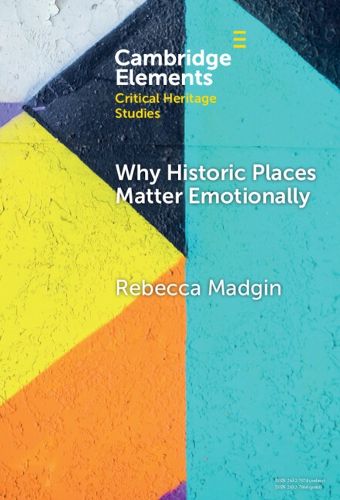Readings Newsletter
Become a Readings Member to make your shopping experience even easier.
Sign in or sign up for free!
You’re not far away from qualifying for FREE standard shipping within Australia
You’ve qualified for FREE standard shipping within Australia
The cart is loading…






This Element explores why historic urban places matter emotionally. To achieve this the Element develops a conceptual framework which breaks down the broad category of 'emotion' into three interrelated parts: 1. Emotional responses, 2. Emotional attachments, and 3. Emotional communities. In so doing new lines of enquiry are opened up including the reasons why certain emotional responses such as pride and fear are provoked by historic urban places; the complex interplay of the physical environment and everyday experiences in informing emotional attachments, as well as the reasons why emotional communities coalesce in particular historic urban places. In addition, the Element explores the ways in which emotion, in the form of responses, attachments, and communities, can be considered within heritage management and concludes with a discussion of where next for heritage theories and practices. This title is also available as Open Access on Cambridge Core.
$9.00 standard shipping within Australia
FREE standard shipping within Australia for orders over $100.00
Express & International shipping calculated at checkout
This Element explores why historic urban places matter emotionally. To achieve this the Element develops a conceptual framework which breaks down the broad category of 'emotion' into three interrelated parts: 1. Emotional responses, 2. Emotional attachments, and 3. Emotional communities. In so doing new lines of enquiry are opened up including the reasons why certain emotional responses such as pride and fear are provoked by historic urban places; the complex interplay of the physical environment and everyday experiences in informing emotional attachments, as well as the reasons why emotional communities coalesce in particular historic urban places. In addition, the Element explores the ways in which emotion, in the form of responses, attachments, and communities, can be considered within heritage management and concludes with a discussion of where next for heritage theories and practices. This title is also available as Open Access on Cambridge Core.